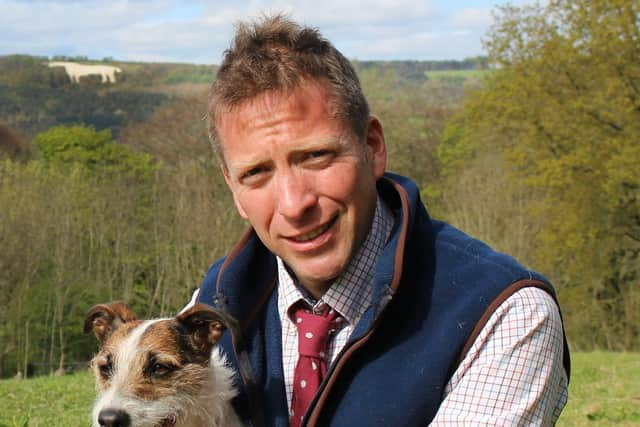The Yorkshire Vet: Cameras on hand to capture a difficult birth in lambing season
We have a flexible and informal relationship to veterinary care on his farm. It’s one where everyone is happy. Rodney calls me if he has a problem. If I’m free and available, I go over to help. If not, then his regular vet comes to assist. This evening, although I was just finishing evening surgery after a busy day, I pledged my assistance.
“I’ll be able to set off in about twenty minutes, if that’s OK?” I said. It was. Soon, I was en route to my first lambing of the season.
Advertisement
Hide AdAdvertisement
Hide AdI was soon rolling up my sleeves, filling my bucket with water (cold) and antiseptic solution and grabbing a bottle of lubricant. I have known Rodney for about eight years and treated many of his animals. Sheep which have needed lambing or prolapses replaced, goats who needed their horn buds removing- not a job that many vets relish- and, of course, some veterinary care for his beloved border collies. Millie, many years ago, needed a cancerous tumour on her lower jaw to be surgically removed. The local vet had shied away from tackling the task, but it went very well. Millie lived until an old age. The matriarch of the farm and leader of the pack, she continued enthusiastically helping with the sheep until well beyond her sixteenth birthday. Flynn, an exuberant but haphazard youngster, suffered a nasty fracture to his humerus after crashing into a stationary tractor provided me with another challenge. Happily, he is still well, very mobile and trying to help gather up sheep.


But this evening was all about the sheep. Rodney caught the shearling, which was standing alone in the corner of the pen, with ease. He explained to me that all the sheep knew him well, and that he spoke to them all and he listened to them in turn. There was a strong bond between this amazing farmer and his flock. I really hoped I’d be able to cajole the lamb out. I prepared my hand and arm and readied myself for the initial inspection. It’s always the moment of truth because there is a multitude of scenarios that can exist. Tonight, the lamb was presented in one of the worst positions- it was breech. This means the lamb is coming backside and tail first. It is backwards, with its hind legs flexed forwards so they are pointing towards the sheep’s head. There is no way a lamb can be born this way, so careful manipulation is required to get the legs round and pointing out backwards.
Of course, I had a camera following my every move, eager to capture the exciting story for a future episode of The Yorkshire Vet. Commentating to camera has become second nature these days, and I did my best to describe what I could feel and what I was trying to do. As the moments went by, I’d managed to dilate the birth canal and then correct the position of first one, then the other leg. I was winning, but still the lamb needed to be delivered. It is a balance between allowing the birth canal to dilate naturally, while not being too slow and risking the suffocation of the lamb. There is a big risk of this with posterior presentations, especially if the umbilical cord is wrapped around a back leg.
But there were no such problems this evening, and the lamb was soon extracted. We cleared its airways and settled it on the straw in front of the new mum. My work was done, but the mum’s evening- and Rodney’s- was just beginning…